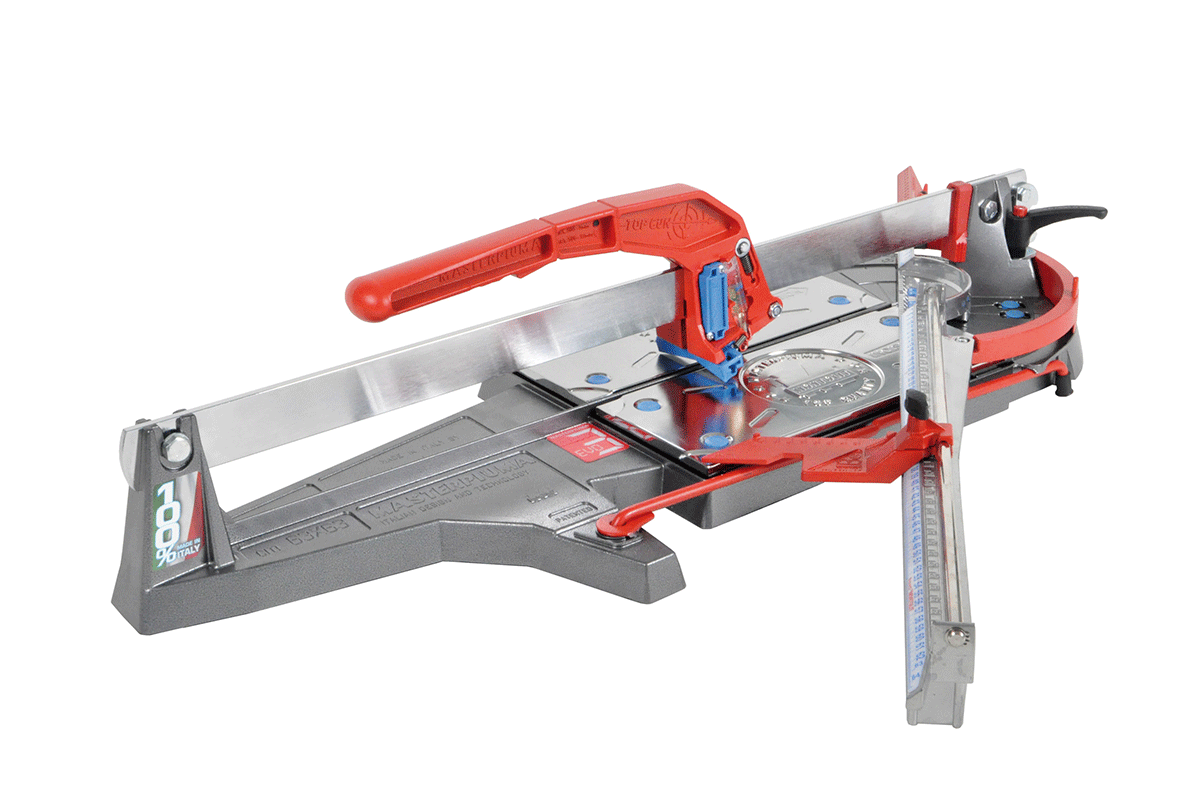
In almost every tiling project, you will need to make cuts to the tiles, as very rarely are tiles able to fit perfectly into an area. In general, tiles fit into three categories; porcelain, ceramic and natural stone, and the type of cutter you will need will depend on the material and its thickness. To achieve a perfectly precise cut you will need great tools, and in this guide, we will take you through everything you need to know to be able to choose the best tile cutter.
Tile scribes and nippers
These small tools work in the same way as manual cutters, with tile scribes used as a quick way to cut through thin ceramic tiles. You will need to manually measure and mark the tile before scoring, with the tile then snapped across the scribe. In comparison, nippers are very similar to pliers and they can be used to cut the edges of tiles so that they fit into awkward spots. They are relatively easy to use, however the level of difficulty when making the small cuts will depend on the thickness of the tile.
Manual tile cutters
A manual tile cutter is a great tool for cutting tiles which will be placed in small gaps, such as at the edge of a tiled floor or wall. Once the tile is measured and marked, you should place it onto the tile cutter and use the guides to ensure it is perfectly straight. Next, you will be able to score the cut with just enough pressure to penetrate the glazed layer. Finally, pull the tile cutter handle downwards to snap the tile along your score line.
There are various scoring wheel sizes available, which can be fitted into the tile cutter to cut through tiles of almost every thickness and material. For example, the following sizes of scoring wheels are commonly used to cut these types of tiles:
• 6mm – Ceramic wall tiles
• 8mm – Smooth porcelain tiles and ceramic wall and floor tiles
• 10mm – Smooth porcelain tiles and ceramic floor tiles
• 18mm – Structured and textured porcelain tiles
• 22mm Structured and hard textured porcelain
If you are looking for a cutter which is quick to setup, easy transport and straightforward to use, a manual tile cutter will be a great option for your straight cuts. These cutters also tend to be cheaper than electric cutters, as they are not built with the same strength and reinforcement, however for larger jobs an electric tile cutter may be more suitable.
Electric tile cutters
Often described as wet saws, these innovative tile cutters use diamond coated blades to cut through tiles at a very high speed, in a similar way to a circular saw. To ensure the blade stays cool despite the cutting friction, the cutter will include a basin of water below the blade or a strong jet of water which is aimed at the blade.
Although electric tile cutters can be used with ceramic tiles, they are usually used to cut much harder and denser materials such as thick porcelain and natural stone tiles. The adjustable speed of these cutters will make light work of these dense materials, where other tile cutters may struggle.
They are also great for projects which will require a range of cuts, including bevelled cuts rather than simple straight or diagonal cuts. The size and flexibility of these electric cutters is well suited to commercial projects and larger tiling jobs.
Which tile cutter is the best option?
We hope that this guide has provided a useful insight into the potential tile cutters available, and as always, our team are available to offer our expert tiling advice. In reality, most professional tilers will need to use a combination of scribes, nippers, manual and electric tile cutters, so that they can easily make the precise cuts needed.
As a wholesale supplier of tiles and tiling equipment throughout the UK and Ireland, we have a wide range of tile cutters available from leading brands such as Montolit, Forte, Raimondi and Battipav. To find out more about stocking our products, or to find your nearest stockists of our tile cutters, please contact our team today.

